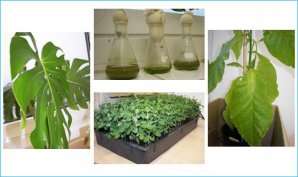SANS: a unique technique to look inside plants' leaves

Plants' leaves capture the sunlight and convert it into the energy used to produce nutrients for their activities. This process is accomplished thanks to the presence of the thylakoid membrane system. While it is known that changes in the environmental conditions affect the structure and functions of the thylakoid membranes, the nature and dynamics of those changes are not fully understood.
To deepen understanding in this matter, a group of scientists from Hungary, France, Germany and Switzerland cultivated tobacco and peas in a greenhouse and went to the local market to buy spinach and lettuce, counting a total of eleven different species.
They then analysed the leaves through small-angle neutron scattering (SANS) experiments at the Budapest Neutron Centre (BNC), Institut Laue-Langevin (ILL), Paul Scherrer Institute (PSI), and Jülich Centre for Neutron Scattering (JCNS). Complementary electron microscopy experiments were also conducted.
This was the first time SANS was used to look at whole leaves and the technique proved to be very suitable. SANS enables examination of the structure and properties of leaves without damaging them. The technique provided unique information on the structure of the thylakoid membrane system in rather quick experiments that lasted less than a minute. Such short experiments can open the way to dynamic studies.
Results showed that when submitted to environmental changes such as different illumination, the organisation of thylakoid membranes changed significantly in the whole leaves.
More information: Biochim Biophys Acta, 1837(9):1572-80. doi:10.1016/j.bbabio.2014.01.017



















